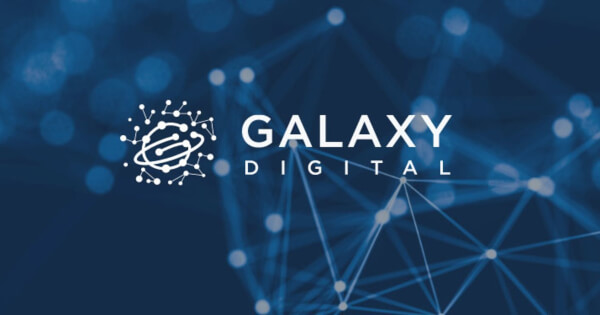We provide over 100+ FREE crypto articles on our SubStack! :D (Link on our profile). This is not financial advice. FEI protocol had all of twitter talking last week. Backed by significant VCs, this new algorithmic stablecoin mechanism, $FEI, managed to raise US$1 billion worth of Ether within the first 24 hours. And within 24 hours of launch, the price of $FEI dropped significantly, as did $TRIBE, the governance token.So what went wrong? How did the economics model and incentive design fail so terribly? And what was the tipping point that caused this massive disaster? Today, we analyse the lessons to learn from $FEI, this new mechanism to create an algorithmic stablecoin.
TLDR: FEI had great ideas in the pure engineering side of the mechanism design. But economics is not pure systems engineering. It includes human interaction, which can make or break an ecosystem. The human element is what separates engineering from economics.
Over the weekend (on Sunday), we had a community chat on Discord, discussing stablecoins. We touched on the topic of FEI protocol, since it was the topic of the week. It is a very interesting experiment that went south, so it's good to unpack what happened and learn from it.
About FEI Protocol
Here's a quick summary of the FEI protocol, because you've probably read about it a zillion times.
- What is $FEI? A stablecoin pegged to $1, algorithmically. That means $FEI's economics is determined mathematically to get the $1 peg. The economics can be supply, withdrawal fee, minting fee, etc.
- What is $TRIBE? A governance token to adjust the parameters to change the mechanisms of $FEI.
- What is so special?
- Instead of using $ETH to create a token valued at $1, you sell your $ETH for $FEI.
- The protocol owns part of the assets as part of governance to manage that $1 peg.
- Direct incentives are used to reward and punish users in the system. If $FEI is below $1 and you sell it for $ETH, you have to pay a "punishment fee" and you get less than $1 worth of $ETH back. If you deposit $ETH to mint more $FEI when it is less than $1, you get more $FEI in return.
- How did it get so popular? It was backed by large VCs and strong personalities on Twitter.
- How much did it raise? 1.3 billion in $ETH, of which 1 billion was raised in 24h.
- What happened within 24h of it releasing? People wanted to get their $ETH back by returning $FEI. This caused massive sell pressure, and with the value of $FEI, with the incentive, dropped significantly. At one point it was less than $0.40 when it is meant to be pegged at $1. This was a 60% value loss.
- Why did people put money in, in the first place?
Economics Mechanism of FEI Protocol
So let's dive into the economics mechanism analysis. We will never stray too far from economics fundamentals — supply, demand, willingness to buy/sell, incentives, punishments and behaviours.
Mechanism Design of FEI Protocol
Fundamentals: Incentives, Punishments, Supply/DemandMechanism design is the design of rules governing the system — participants and general token usability.Free AlphaWith stablecoins, one needs to bootstrap the community since most of the value of stablecoins come from their usability. To bootstrap, $FEI is sold at a discount and capped at $1.01. If you enter the bonding early (e.g. $0.99), you get to profit from the difference between the price you purchased at and the market value, $1.Free TRIBEEven at $1.01, people are still purchasing $FEI for $ETH because they also receive $TRIBE. Since $FEI is technically priced at $1, and if you value $TRIBE more than $0.01, you are getting a deal by receiving $TRIBE.Direct IncentivesThe mechanism also has direct punishments for users. When prices are below $1 and you want to sell it, you have to pay a punishment fee. That is the difference in cents, squared. So if it is currently priced at 0.95, the difference is $0.05. And the punishment is $0.25. That means your $FEI is really worth $0.75.In this case, the value before punishment cannot be less than $0.90, since the squared difference is $1. That means at $0.90 per $FEI before punishment, you are selling $FEI for nothing in return.And this is important because it leads to the effects of a circular economy explained next.
Conclusion
Right now, the practical thing could be to sell $ETH and reimburse users who lost money. Ideally, the VCs backing the protocol can use their power and influence to do something good. But realistically, the truth is that the protocol needs to build faith and trust in the system again. The problem is that it is extremely challenging. Once trust and faith are broken, it is very difficult to restore them.Nonetheless, this is a great experiment. It brings in features of DeFi — bonding curve, quadratic fees and DEX liquidity mechanism. It is great to experiment by bringing them together. However, more analysis and modelling could have been done before launching the protocol.When launching projects in a bull market it is easy to receive liquidity and support. But do not force to test, test and test again. We're building the future. It's not just about design and builds. Test, test and test again.
[link] [comments]

You can get bonuses upto $100 FREE BONUS when you:
💰 Install these recommended apps:
💲 SocialGood - 100% Crypto Back on Everyday Shopping
💲 xPortal - The DeFi For The Next Billion
💲 CryptoTab Browser - Lightweight, fast, and ready to mine!
💰 Register on these recommended exchanges:
🟡 Binance🟡 Bitfinex🟡 Bitmart🟡 Bittrex🟡 Bitget
🟡 CoinEx🟡 Crypto.com🟡 Gate.io🟡 Huobi🟡 Kucoin.




















Comments